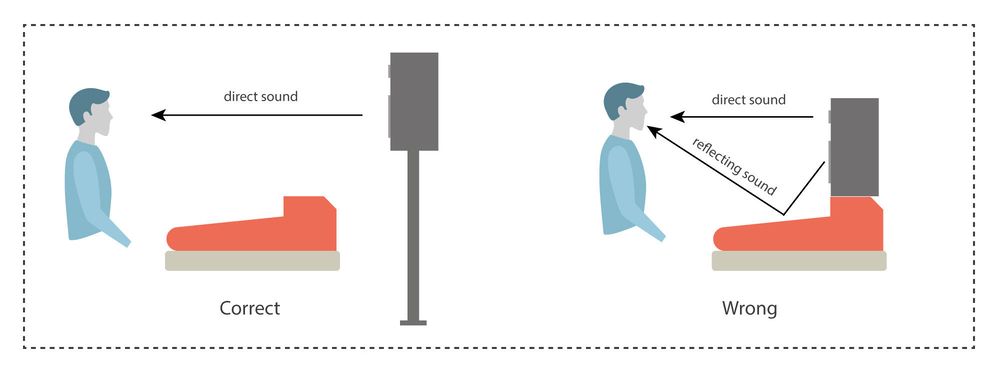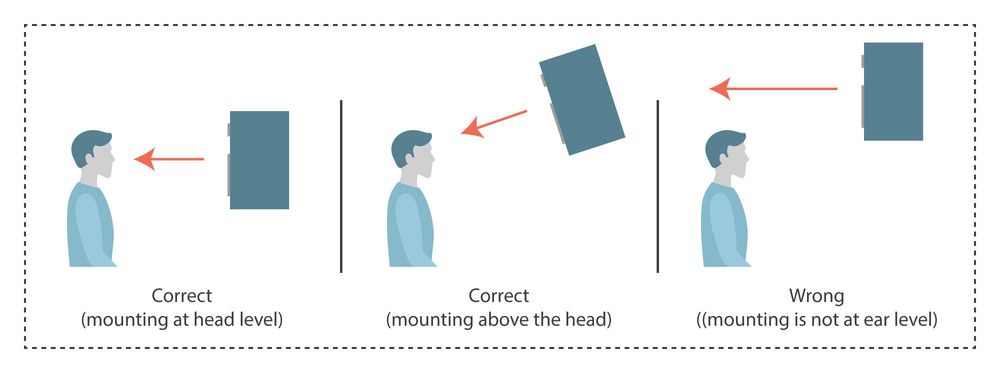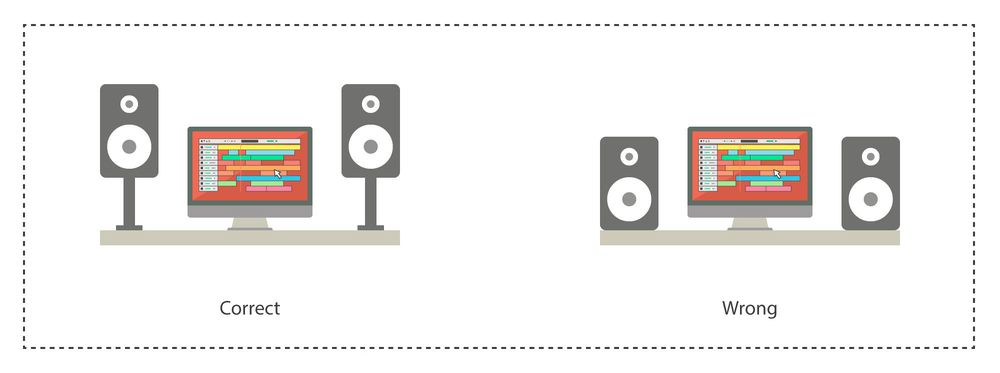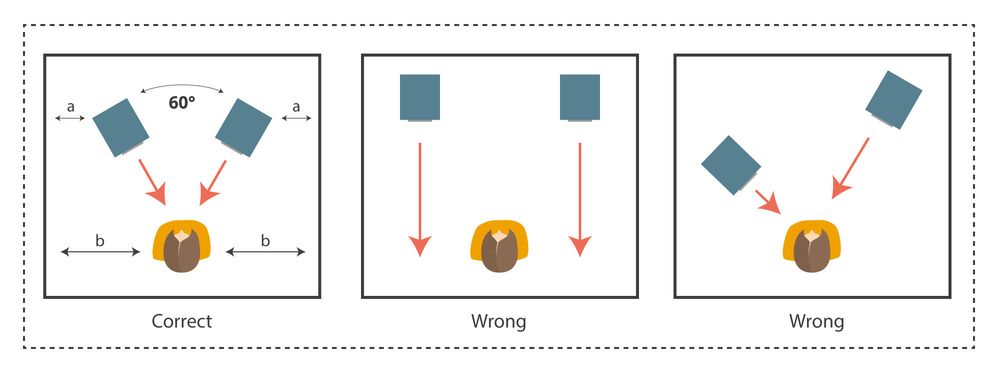5. Set-up and Positioning
The direct sound, which travels in a straight line from the central axis of the speaker, should hit the sound engineer's ear directly. This is best achieved by placing the speakers on suitable stands or mounting them on the wall or ceiling. Placing them on a table, shelf, or similar surfaces is not recommended for optimal monitoring.
To optimize near-field monitor sound, it's important to position speakers in a way that minimizes early reflections. You should also ensure that the mixing console's surface doesn't act as a reflective surface.This can happen if the speakers are placed on the meter-bridge. The speakers should be positioned correctly, behind the meter bridge, at the right height so that the direct sound reaches the ear unhindered. The meter bridge then shades the sound that would otherwise be reflected by the console.

During setup, it's important to make sure that the distances between speakers and walls or other sound-reflecting surfaces are equal (denoted as value "a" on the picture below). Speakers should either be placed as far away from the walls as possible or very close to the wall (around 10 cm of wall distance for speakers with rear bass reflex). In the first scenario, it's presumed that wall reflections lose some of their impact due to the extended path they travel to reach the listening position, which can mitigate their negative effects. However, this approach can lead to frequency drops, especially in the low frequencies, which require more efforts to effectively absorb. This is a drawback of this placement method.
The second approach assumes that placing the speakers close to the wall causes more significant frequency drops, particularly in the low frequencies, but these issues shift to higher frequency ranges, making them easier to dampen with standard absorbers. However, close-to-wall placement often leads to a bass boost of up to 6 dB (up to 18 dB in room corners). This, in turn, is a drawback of this setup method. Many active speakers now incorporate room correction EQ to counteract this effect.
The choice between these placement options will often be influenced by the available space. If you have enough room to try both, experimentation is the best way to determine which position yields better results for your specific setup.
Speakers should be at least 1 meter, but preferably 0.5 meters, away from the wall. If this distance is not maintained, especially in room corners, it results in a bass boost that can distort the sound image. Consequently, mixes can sound thin and lack foundation on other systems. The distance between the speaker and listener should be between 0.7 meters and 2.0 meters. Longer distances require the use of more expensive mid-field (2 to 3 meters) or far-field (3 to 5 meters) monitors.
Speakers should be rotated at the same angle toward the listener so that the center of the tweeter's dispersion and the back of the listener's head form an equilateral triangle (the so-called listening triangle).






